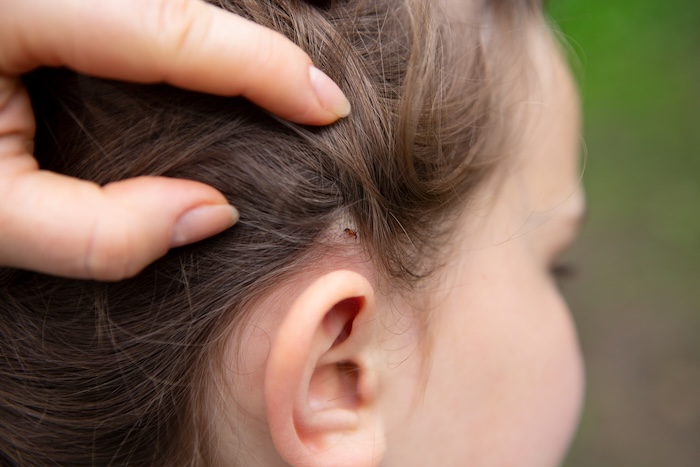Warm weather brings more than just sunshine and playtime — it also brings ticks. These tiny creatures may seem harmless, but they can carry Lyme disease, making prompt and proper care essential. At Ocean Pediatrics, we understand that a tick bite can cause a bit of worry, but with the right information, you can confidently care for your child at home and know when to seek pediatric care for support.
What to have at home
Your first step to tick safety is to have a ‘tick kit’ on hand at home. These kits include a number of essentials to remove the tick, treat the area, and store the tick for testing. Your kit should include:
- Fine-tipped tweezers
- Rubbing alcohol or antiseptic wipes
- A small container or sealable plastic bag for storing the tick
- A magnifying glass
- Child-safe insect repellent, calamine lotion or hydrocortisone cream
- A digital thermometer
How to spot a tick on your child
Ticks can be as small as a poppy seed! They often hide in warm, moist areas like behind the ears, along the hairline or scalp, under the arms, around the waistband or behind the knees. Since they can be difficult to spot, watch for common signs your child may have a tick, including itching or discomfort in a specific area, a visible dark speck on the skin, and redness or swelling at the site. Early detection is key in proper pediatric tick bite care.
How to safely remove a tick
So you’ve spotted that pesky critter, now what? First things first, relax. Then follow these steps:
- Steady your little one, you’ll want them to take deep breaths and not move around while you remove the tick.
- Use fine-tipped tweezers to grasp the tick as close to the skin’s surface as possible.
- Pull upward with steady, even pressure. Avoid twisting.
- Clean the bite area and your hands with rubbing alcohol or soap and water.
- Monitor the bite area and your child for the next few weeks. Knowing how to treat a tick bite in kids can help prevent complications.
Safe, kid-friendly tick prevention
Dress your child in long sleeves and pants when playing in wooded or grassy areas. Use EPA-approved, child-safe tick prevention repellents such as those containing picaridin or oil of lemon eucalyptus (avoid DEET in children under 2 months). Always check your child for ticks after outdoor play — the sooner you remove them, the better. Practicing tick removal for children as soon as a bite is discovered helps minimize health risks.
When to medicate or seek medical help
If the tick has been attached for over 36 hours, or if your child develops a rash, fever, or flu-like symptoms, or if the bite area looks infected (red, swollen, warm, or oozing), please don’t hesitate to contact your care family over here at Ocean Pediatrics. In some cases, a preventive dose of antibiotics may be appropriate, but it’s a rare occurrence.

At Ocean Pediatrics, our team of passionate pediatricians and care providers are here, ready to give your family the superior care and attention it deserves. Whether it’s an itty-bitty tick bite or something more serious, you can count on us to guide you with compassion and expertise. Stay safe this summer! If you need us, then book an appointment!








